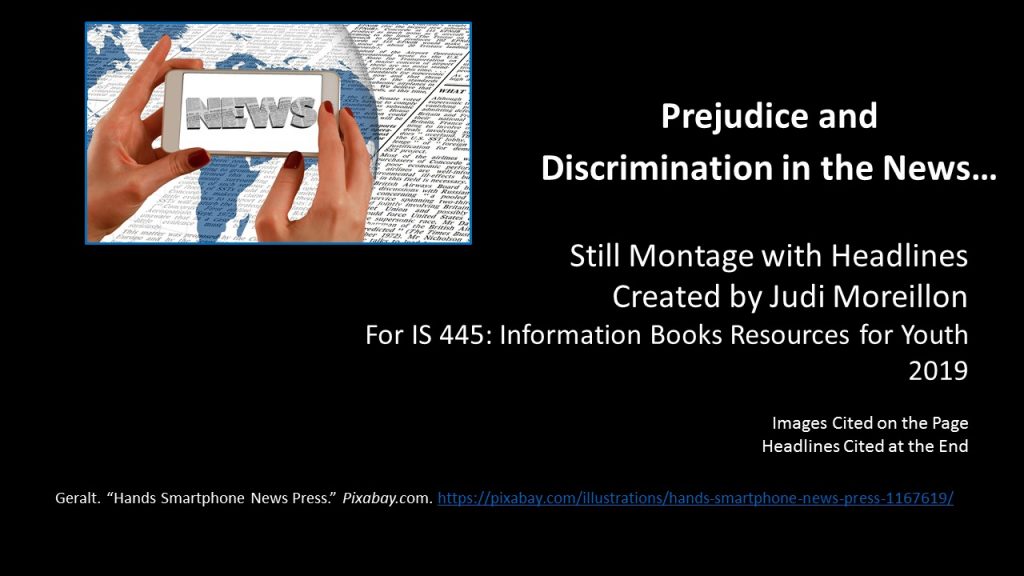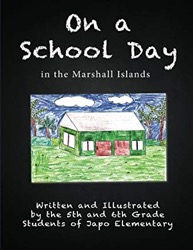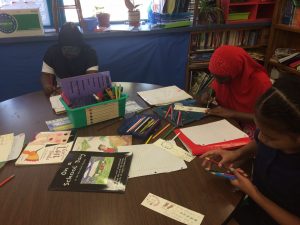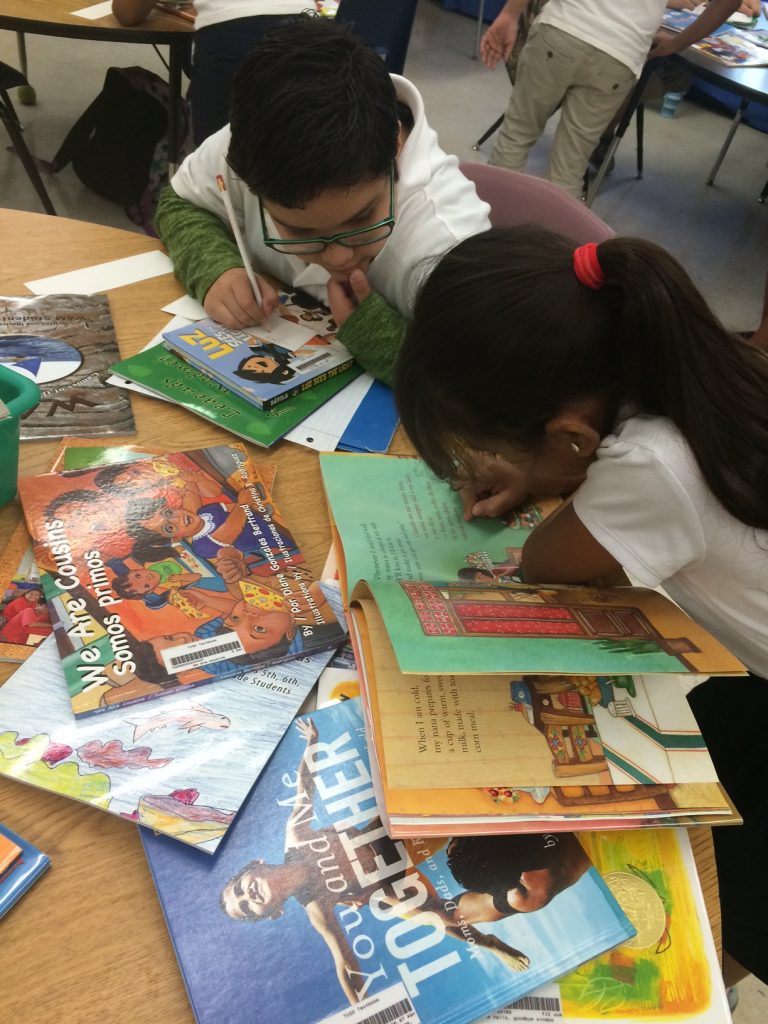Judi Moreillon, University of Illinois, Urbana-Champaign
Before beginning our whole-class Guided Inquiry Design (GID) experience, I shared information about the eight phases of the process. Students also read a chapter from my latest professional book that describes the process in detail. I shared my experience of using the GID with K-12 students and in professional development activities for educators and librarians. I explained the purpose for modeling the process and let students know they would engage in small group inquiry projects later in the course and could also select an inquiry process for a choice project assignment.
Open: Prejudice and Discrimination
The “Open” phase of the GID is designed to stimulate learners’ curiosity, pique their interest, and invite them to join in the inquiry process. Educators often launch this phase by posing a question, problem or dilemma. The Open phase may begin with a read aloud, a selection of media or a short text that hones in on the inquiry topic or theme. The overarching or essential question for the inquiry can also serve as a prompt for connecting learners to the topic and opening and engaging their minds.
I launched our inquiry into prejudice and discrimination by sharing a photo montage of global current events images and brief print from newspaper and website headlines focused on children and teens who currently experience prejudice and discrimination. My goal was to focus students’ thinking on how global prejudice and discrimination impact today’s youth.

Slideshare Link: https://www.slideshare.net/jmoreillon/prejudice-and-discrimination-in-the-news Continue reading →








